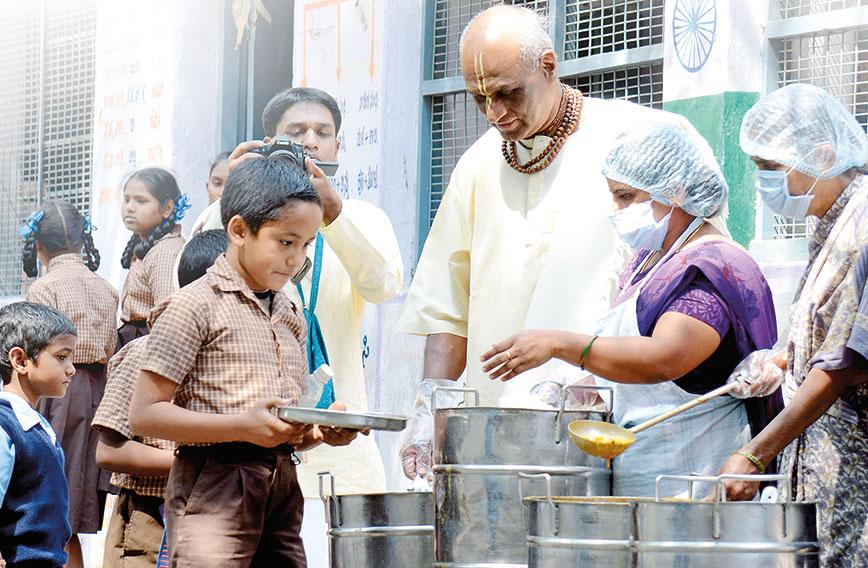
ARUN MAIRA
Institutions must learn how to produce outcomes on scale much faster. The climate is getting hotter faster than our collective ability to reduce global warming. Scientists can point to solutions, such as the need to reduce carbon emissions to net zero. The problem is how to implement the solutions. All countries, all states within countries, and all their citizens must cooperate to find ways to meet the universal goal.
The Sustainable Development Goals (SDGs) list a more comprehensive agenda, beyond only reduction of carbon in the atmosphere, to improve the well-being of the planet and all human beings. The lives and livelihoods of people in many countries have been greatly harmed already by the dwindling of clean water resources. Poverty persists, despite economic growth, even in many richer countries. Inequalities of income and wealth are increasing in all countries. All these problems must be addressed simultaneously to improve well-being. Racing to meet a carbon reduction goal, with solutions that hamper the achievement of the other goals for universal well-being, may cause more harm. Solutions must be systems solutions for all-round improvement, not for any one outcome on scale. Moreover, solutions must be customized to fit local conditions. The solutions will have to be developed and implemented by partnerships, as the 17th SDG states. Partnerships are essential between local communities on the ground, local governments, and business actors too.
India’s ability to produce outcomes on scale will determine how fast the world can achieve the SDGs. India and China, with well over a billion citizens each, have the largest numbers of humans on the planet (the next largest country, the US, has a little over 300 million). So far, China is much further ahead than India on several goals such as reduction of poverty and the quality of public services. Therefore, faster achievement of large-scale outcomes by India will help its own citizens and the world the most.
Can India deliver on scale? It depends on what is to be done. India has a remarkable ability to conduct elections on scale: over 600 million persons voted electronically in the last national election. Votes were gathered even in remote mountain villages high in the Himalayas and in the dense forests of central India. No other country can match this ability. 1.2 billion Indian citizens have been given Aadhaar cards. A massive country-wide drive was successfully conducted to take their photographs and get their signatures (or thumb prints). India has administered over one billion doses of the COVID vaccine so far, and the pace has picked up with more vaccines becoming available. (China has given about 2.2 billion, and the US about 430 million.)
India has demonstrated that, when something standard must be delivered on scale, even in very tough ‘last mile’ conditions with poor infrastructure, it can get it done. Civil society organizations and private businesses have been valuable partners of the government to run widespread supply chains, with civil society playing a vital role in the last mile. However, the SDGs are not about delivering things to citizens. Achievement of the SDGs requires the change of systemic conditions within the communities. SDG outcomes will be produced on scale when the conditions of communities everywhere are changed in ways that fit their needs and resources. Indeed, if their conditions do not improve faster, the need to deliver more relief on scale will increase as the conditions of local systems deteriorate further with climate change.
Changing complex systems on scale requires different capabilities and orientations than those that deliver standard products on scale. Private sector organizations are masters of producing and delivering products efficiently on a large scale. That is how they increase their revenues and make profits. Changing the systemic conditions of communities is not their responsibility: that is the responsibility of governments, to their mind. While the government must provide relief on scale when there is distress because citizens will turn to it, its primary responsibility is to improve the resilience of communities, by ensuring their environment is not harmed, and providing public services for health, education, and so on. So, the government must be an effective systems changer, not only an efficient deliverer.
Civil society organizations fall into three broad categories. There are those whose role it is to stand up against governments and against business organizations too for the rights of communities. Then there are those who deliver relief and services on the ground. Often, these roles are in conflict: in one role, NGOs are partners of governments and private businesses in delivering; in the other, they must stand up against them for the rights of citizens.
Civil society organizations also play a third role. Which is to be catalysts of systems change in the communities. That way they can help the most in accelerating India’s progress towards achieving the SDGs.
All three roles — to stand up for rights, to deliver in the last mile, and to be catalysts for change — are honourable roles for civil society organizations. However, they require different leadership orientations and different types of capabilities. Protesting against government apathy is necessary, but by itself does not produce results. Systems change is required for that, and civil society organizations can help. Their catalytic role empowers communities the most; it makes communities less dependent on the charity of others, including the civil society organizations themselves.
India and the world need more catalytic civil society movements. Catalysts require different capabilities than demanders and deliverers. Catalysts must have the ability to draw others together to see the whole system they must facilitate change in, and not just fill holes in it with their services. They require systems thinking, and the ability to facilitate partnerships amongst others to stimulate systemic action for the benefit of the community. Trust of all the partners is essential for good catalysts. They must not compete with any of them to claim credit for the outcomes. Catalysts are leaders with more humility and less ego.
Arun Maira is author of A Billion Fireflies: Critical Conversations to Shape a New Post-pandemic World
Comments
Currently there are no Comments. Be first to write a comment!




